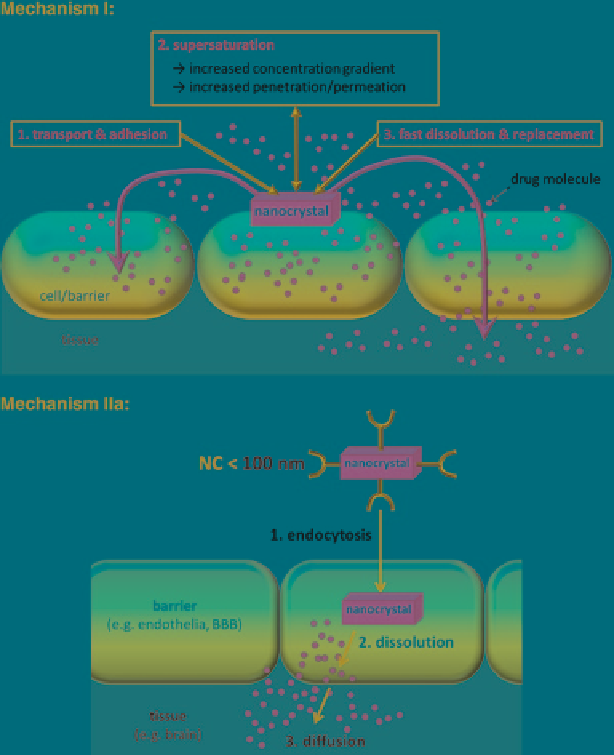Biomedical Engineering Reference
In-Depth Information
place by uptake of the nanocrystals themselves (cf. 7). Delivery mechanism I
consists of the steps (Fig.
4
, upper):
1. Formation of a supersaturated solution around the crystal, thus
2. creating a high concentration gradient between nanocrystal and target cell, and
3. fast replacement of diffused molecules by very fast continuing dissolution from
the large nanocrystal surface (= depot).
Supersaturated solution, concentration gradient and dissolution are much faster
compared to micrometer crystals, thus explaining the superior delivery properties
Fig. 4
Delivery mechanisms of drugs to cells/barriers via nanocrystals: mechanism I (
upper
) -
the nanocrystals transport the drug to the cell, provide higher concentration gradient and the
molecules diffuse into the membrane/cell. Mechanism II - the nanocrystals <100 nm enter the
cell, delivering the drug to cell compartments or the drug diffuses from these cells to underlaying
tissue (mechanism IIa,
middle
, e.g. endothelial cells of blood-brain barrier (BBB)), or the nano-
crystals enter the cell and use the cell as carrier to their final target (mechanism IIb,
lower
)

Search WWH ::

Custom Search